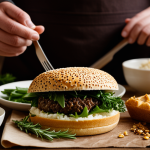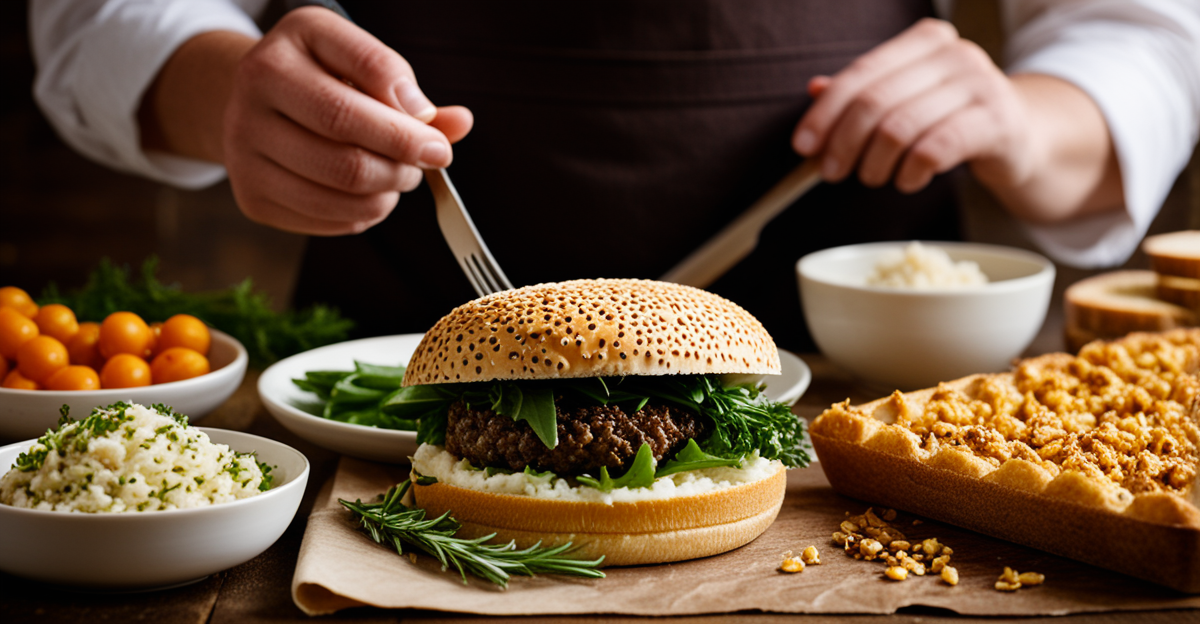Practical Ways to Make Traditional British Foods Healthier
Traditional British food is beloved for its rich flavors and comforting qualities, but embracing health-conscious British recipes can make these meals more nutritious without sacrificing their essence. One of the most effective ways to improve traditional dishes is through thoughtful ingredient substitutions. For example, swapping butter for healthier oils like olive or avocado oil can reduce saturated fat intake, while still maintaining the creamy texture in sauces or mashed potatoes.
Cooking methods also play a crucial role in reducing calorie and fat content. Techniques such as baking, steaming, or using an air fryer can replace deep-frying, significantly lowering the amount of fat while preserving the traditional crispy finish expected of British classics. These healthier alternatives not only enhance the nutritional profile but also keep the authentic taste intact.
Topic to read : Why is British Food Culture Evolving?
Maintaining flavor while improving nutrition requires strategic approaches. Using fresh herbs and spices can reduce the need for excess salt, and incorporating more vegetables adds fiber and vitamins without altering the classic feel. Additionally, choosing leaner cuts of meat or plant-based proteins can make dishes like stews or pies lighter, keeping your meals satisfying and aligned with healthy cooking tips. This balance ensures that traditional British foods remain both delicious and nutritious.
Ingredient Swaps for Iconic British Dishes
Exploring healthy ingredient substitutions is key to transforming traditional British food into low-fat British food while keeping its cherished character. One effective strategy involves replacing high-fat meats such as pork belly or fatty cuts of beef with leaner proteins like skinless chicken, turkey, or even plant-based alternatives. These swaps reduce saturated fat without sacrificing the satisfying density typical of British dishes like pies and roasts.
Also read : What are the steps to creating a delicious Welsh rarebit?
Dairy is another candidate for substitution. Using lower-fat milk, yogurt, or cheese varieties can decrease calorie intake but still provide the creamy textures British food lovers expect. For instance, substituting full-fat cream with Greek yogurt in sauces or mash achieves richness without excess fat. Additionally, swapping butter for healthier oils, as mentioned, complements these changes.
Incorporating whole grains and fiber-rich ingredients enhances nutritional value. Wholemeal flour can replace white flour in recipes such as scones or pastry, providing more fiber and sustained energy release. Using oats or bran in batters for fried foods reduces fat absorption, aligning with healthier cooking tips.
Addressing sugar and salt is essential too. Many traditional British recipes include added sugars or salty condiments which can be moderated without losing flavour. Replacing refined sugar with natural sweeteners like honey or apple puree supports reduced sugar British recipes. Meanwhile, leveraging fresh herbs, spices, and citrus zest adds punch without relying on excess salt. This approach preserves the authentic flavour profile cherished in classic meals but promotes better health outcomes.
By systematically applying these healthy ingredient substitutions, classic British dishes can become balanced meals that satisfy both taste buds and nutritional needs.
Healthier Cooking Techniques for British Classics
When aiming for healthier alternatives in traditional British food, choosing the right cooking methods is essential. Baking significantly reduces fat compared to deep frying, making it ideal for many beloved dishes such as fish and chips or roast potatoes. Baking allows for a crispy texture without excessive oil, preserving the authentic bite while lowering calorie content.
Air frying British food has gained popularity as an innovative way to replicate the crunch and flavor of fried dishes but with minimal oil. This method circulates hot air around the food, achieving a crisp exterior with significantly less fat, an excellent technique for those seeking low-fat British food options.
Grilling is another valuable technique to lighten classic meals like roasts or sausages. It allows fat to drip away and imparts a smoky flavor, enhancing taste without added calories. For puddings and pies, reducing fat can be achieved by baking in moderate heat and using lighter fillings or incorporating vegetables, ensuring these health-conscious British recipes remain indulgent yet balanced.
Following healthy cooking tips such as avoiding excessive oil, using non-stick cookware, or preheating cooking surfaces can further reduce unnecessary fats. These methods not only improve the nutritional profile of traditional British dishes but also help maintain the genuine flavors cherished in British cuisine.
Step-by-Step Healthy Recipes for Favorite Dishes
Delving into healthy British recipes offers delicious ways to enjoy classics with improved nutrition. Let’s explore how to create some well-loved dishes in lighter, healthier forms while respecting their traditional roots.
Healthier Fish and Chips
This staple can be transformed by using an air fryer instead of deep frying, which drastically reduces fat content but keeps the signature crunch. Opt for skin-on white fish fillets coated in a batter made with wholemeal flour and sparkling water to add lightness. Oven-baked chips seasoned with herbs replace standard deep-fried potatoes, enhancing fiber and lowering calories. This method retains the familiar taste and texture, making it an excellent example of health-conscious British recipes.
Lightened Shepherd’s Pie
For a nourishing twist, substitute fatty lamb mince with lean turkey or plant-based alternatives rich in protein yet low in saturated fat. Incorporate plenty of vegetables such as carrots, peas, and mushrooms into the filling to boost fiber and micronutrients. Using mashed potatoes blended with low-fat milk or Greek yogurt creates a creamy topping with less fat, maintaining the dish’s comforting appeal. This approach highlights how traditional British food can be smartly adapted as low-calorie British meals without compromising on authentic flavour.
Reduced-Sugar Sticky Toffee Pudding
Modifying dessert requires careful balance. Replace refined sugars in the toffee sauce and sponge with natural sweeteners like honey or mashed dates to lower glycemic impact and add vitamins. Using wholemeal flour adds fiber, while reducing the portion size still satisfies cravings. Baking the pudding instead of frying aligns with healthy cooking tips, ensuring indulgence with nutritional improvements.
Wholemeal Scones Twist
Scones can be made healthier by swapping white flour for wholemeal, increasing fiber and satiety. Incorporate dried fruits or zest for natural sweetness, minimizing added sugars. Use low-fat milk and a small amount of butter or oil to cut saturated fat. Baking at a moderate temperature achieves the perfect rise and golden texture without excess fat absorption, a method consistent with healthier alternatives in British baking.
Each recipe demonstrates that embracing health-conscious British recipes is practical and enjoyable. By combining smart ingredients with moderate cooking techniques, traditional British food transforms into wholesome meals satisfying both palate and health goals.
Practical Ways to Make Traditional British Foods Healthier
Transforming traditional British food into health-conscious British recipes hinges on clever substitutions and cooking methods that reduce fat and calories without losing the beloved flavors. One fundamental strategy involves replacing high-saturated-fat ingredients with healthier alternatives. For example, swapping full-fat dairy for lower-fat versions or using plant-based oils instead of butter helps cut down on unhealthy fats while maintaining creaminess and depth. Similarly, choosing lean proteins like skinless poultry or legumes instead of fatty cuts can lower the fat content significantly.
Cooking techniques play an equally crucial role. Baking or grilling instead of frying not only reduces oil usage but also preserves texture and flavor. Air frying, in particular, has gained acclaim for delivering the crisp exterior of fried foods with minimal added fat, fitting perfectly into healthy cooking tips for British classics. Steaming vegetables or using moisture-rich cooking methods keeps nutrients intact without excess calories.
Maintaining authentic taste while improving nutrition relies on enhancing dishes with fresh herbs, spices, and natural flavor boosters like citrus zest. These ingredients minimize the need for salt and sugar, supporting health-conscious British recipes that honor tradition yet improve well-being. Incorporating fiber-rich whole grains or vegetables subtly boosts nutritional value and adds satisfying texture, ensuring the final dish remains comforting and flavorful.
By combining thoughtful ingredient swaps with modern, lower-fat cooking methods, traditional British food can be enjoyed as wholesome, delicious meals that support healthier lifestyles without sacrificing their iconic character.



